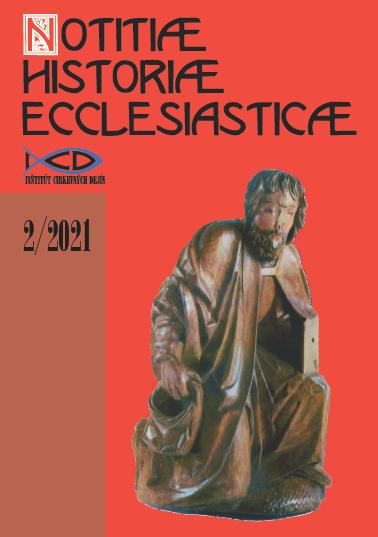Koblyna and Rokovyna and the Clergy of the MGKE in Czechoslovakia in the 1920 s.
Koblyna and Rokovyna and the Clergy of the MGKE in Czechoslovakia in the 1920 s.
Author(s): Viktor Vasilovič KicheraSubject(s): Christian Theology and Religion, Theology and Religion, Interwar Period (1920 - 1939), Eastern Orthodoxy, Sociology of Religion
Published by: VERBUM - vydavateľstvo Katolíckej univerzity v Ružomberku
Keywords: Clergy; Czechoslovak Republic; koblyna; Mukachevo Greek Catholic Eparchy; rokovyna;
Summary/Abstract: Based on new archival sources, this article examines the situation of the clergy of the Mukachevo Greek Catholic Eparchy, whose parishes were left without support from the faithful and state support. The social tensions between the Greek Catholic believers and the clergy, caused by decisions of the Czechoslovak authorities to cancel church donations “koblyna” and “rokovyna”, unfortunately were used by all stakeholders (the authorities, Orthodox and Communist agitators) for weakening the Greek Catholics in general. The field for the activities of communist agitators, including the activity against the Church, was ideal because of the poverty and even famine in some regions of that time. During the Austro-Hungarian Empire, peasants began to perceive church work or donations for parishes as a duty. This often led to conflicts with priests. On the other hand, the abolition of this maintenance, as well as the lack of congruа, led to a complete lack of provision for the clergy in some cases. The reintroduction of koblyna and rokovyna began only after the changing of Bishop Anthoniy Papp. The slogans «priests-landlords» were widespread, but this was not true. Archival documents show that more than 78% of parishes and priests in 1922 did not have full maintenance and needed financial compensation.
Journal: Notitiae Historiae Ecclesiasticae
- Issue Year: 10/2021
- Issue No: 2
- Page Range: 55-64
- Page Count: 10
- Language: English

